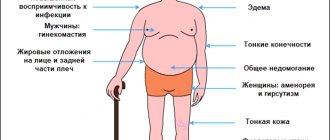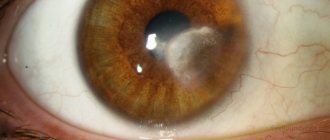What is chickenpox
Chickenpox is one of the types of infectious pathologies, which is characterized by an airborne transmission mechanism and damage to the skin. A varying number of red bubbles appear on the surface of the body, inside of which there is serous content. The formation of new eruptive elements is accompanied by unbearable itching and an increase in body temperature.
Previously, it was believed that after an illness a stable lifelong immunity is formed, which reliably protects against the recurrence of the disease. It has now been proven that particularly susceptible people can get chickenpox up to several times during their lifetime. The maximum number of cases of chickenpox developed in one person is 10.
The virus that causes smallpox is highly contagious, meaning contracting it for the first time is almost inevitable
The causative agent of the infectious disease is the Varicella-Zoster virus, a pathogenic microorganism that penetrates the human respiratory tract and multiplies in the epithelial cells of the oral and nasal cavities. Next, the mucous secretions of the nasopharynx are swallowed and enter the esophagus and stomach, where some of the viruses die, while others continue their journey through the human circulatory system, reaching the upper layers of the skin. During its life, Varicella-Zoster releases a large amount of substances that are toxic to the body and cause a violent response in the form of an inflammatory process.
Chickenpox - characteristics of the disease
It is difficult for an adult body to cope with an emerging infection, since a person is practically defenseless against the virus attacking him. Very often, during the development of the disease, an adult experiences the appearance of pain in the throat; in some cases, convulsions may occur, and the disease itself lasts a longer time.
Chickenpox is classified as a type of illness that is characterized by its own course and gradual subsidence.
Important! Chicken pox is a very common disease; the course of the disease is not very complicated and, when infected, the child’s body is cured fairly quickly. You need to know that this disease can cause quite noticeable discomfort in a child, which is reflected in a deterioration in the general well-being and condition of the body.
One open question is how exactly the chickenpox pathogen spreads between people. Massive and rapid infection of children occurs if a sick child is in a large group of children in a closed room. In this case, the probability of infection of all children in the group approaches 100%.
Herpesovirus, which is the causative agent of chickenpox, is highly contagious. The conditions most suitable for its rapid spread are closed premises with large concentrations of children or people exposed to viruses. In some cases, it is possible for a healthy person to become infected from a sick person in an open space, since the virus can spread up to 20 m from the source of infection. Under appropriate conditions, a child can become infected with chickenpox from an adult suffering from herpes zoster, since the causative agent of these ailments is one type of herpesovirus.
There is a widespread belief among doctors that after chickenpox, the virus is localized in the spinal tissues in a dormant state, and when favorable conditions arise, it is able to wake up, which can provoke re-infection with chickenpox. In addition, activation of the virus from a dormant state can provoke the development of such an unpleasant disease as herpes zoster. Most often, you can get chickenpox again as an adult.
Causes of recurrence of chickenpox in children and adults
The properties of the organism itself play a significant role in the formation of secondary infection. The most vulnerable category are children, the elderly, adolescents, pregnant women and people with weakened immune systems. The following factors influence the re-development of chickenpox:
- the presence of chronic diseases (gout, hypertension, gastric ulcer, diabetes mellitus);
- infectious diseases (HIV, tuberculosis, hepatitis, syphilis);
- condition after surgery, chemotherapy and radiation therapy;
- malignant neoplasms;
- tendency to form viral infections;
- primary immune deficiency;
- complicated childbirth;
- work in hazardous production;
- frequent hypothermia and colds;
- skin pathologies (allergies, dermatitis, erysipelas, cracks).
Causes
Shingles is caused by the varicella-zoster virus, which also causes chickenpox.
Varicella-zoster is associated with the herpes virus, which causes genital herpes and common cold sores. Therefore, shingles is also known as herpes zoster. Doctors can't pinpoint why the virus suddenly flares up again after months or years of dormancy. This may be because our immune system becomes more susceptible to infection as we age, which may explain why shingles is most common in older people.
Children who have had chickenpox are at high risk of developing herpes zoster if their immune system is weakened by the illness or by taking certain medications.
Symptomatic manifestations
The entire clinical picture of the development of the disease is conventionally divided into general and local signs. Usually, a person who has previously had chickenpox will not suspect that he has a similar illness, since there is an ingrained false belief that there is practically no second risk of becoming infected. However, characteristic clinical symptoms allow us to draw an unambiguous conclusion about the nature of the disease.
Repeated chickenpox always occurs with less intensity than the initial attack.
Generalized signs include:
- temperature rise to 37–38 degrees;
- weakness, lethargy, apathy;
- severe fatigue;
- decreased performance;
- loss of appetite;
- nausea and vomiting immediately after eating;
- intolerance to strong odors;
- weight loss;
- sleep disorders;
- headache;
- sore throat.
Local symptoms are characterized by:
- the formation of rashes on the skin (red in color, which from small spots grow into papules with cloudy contents);
- soreness of some parts of the body upon palpation;
- severe skin itching, burning and discomfort;
- hemorrhages into fatty tissue.
Photo gallery: manifestations of chickenpox
The rash on the back is particularly painful
Chickenpox rash can densely cover the skin
There are fewer rashes on the skin of the extremities than on the face and body
Table: comparative characteristics of rashes in various diseases
| Clinical sign | Secondary chickenpox | Primary chickenpox | Rubella | Acne | Allergic rashes |
| Localization of the rash |
|
|
| The entire body surface or area of drug injection/ointment use | |
| Intensity of formations | Single rashes | Multiple elements throughout the body | Cover evenly the entire body part | In the affected area | Can be either multiple or single |
| Pain on pressure | Slightly painful | Sharply expressed | Rarely seen | In the area of infiltrate accumulation | Doesn't cause any discomfort |
| Bubble Contents | Scarlet bubbles with cloudy contents | Point formations without fluid | White purulent masses with a pronounced core | Red bumps without contents | |
| Presence of burning, itching, discomfort | Occurs in 70–80% of all patients | In most patients, it increases during sleep | May be missing | Almost no bother | Severe itching that gets worse when touched |
Video: how the chickenpox virus develops in the human body
The insidious nature of chickenpox in adults
Children tolerate chickenpox relatively easily; only itchy rashes cause discomfort. Those who have recovered from the disease receive immunity to this disease for life. If a person avoided the disease in childhood, his body remains completely defenseless against the chickenpox virus.
Perhaps this is why sick adults suffer from chickenpox more severely, and the risk of complications in the form of pneumonia or bronchitis is much higher for them. The main reason is the difference between the degree of immune protection. In children whose mothers had chickenpox, the disease is mild, since their body is still protected by maternal immunity. Adults have developed their own immunity, which does not cope well with chickenpox: more severe rashes appear on the body, a high temperature lasts for a long time, a sore throat, and convulsions may appear.
How is the diagnosis made?
Quite often, patients turn with their complaints to various specialists: an allergist, a therapist, a dermatovenerologist and even a cosmetologist. An infectious disease specialist treats recurrent chickenpox. Typically, a visit to a doctor begins with a conversation: the patient must indicate the time of onset of the first symptoms of the disease, the appearance of itching and rash elements, and general malaise. The possibility of contact with persons suffering from smallpox or herpes zoster must be established. It is also necessary to remember whether there have been episodes of chickenpox previously during your life, how long ago it was and how the disease developed.
If you tried to treat yourself or squeezed out the rash, you should not hide it from the doctor: this way an infection could be introduced into the body.
Next, the doctor proceeds to the examination: the patient is asked to undress to his underwear, after which the skin is examined. This takes into account the amount of rash, its distribution and localization, pain on palpation and swelling of nearby tissues. Based on these data, it can be assumed that chickenpox will develop again.
The visual examination is supplemented by the patient’s story about the circumstances of the rash.
Laboratory diagnostic methods
Often, recurrence of chickenpox is quite difficult to detect without resorting to special tests. To carry them out, biological materials from the patient are necessarily taken, which make it possible to assess the condition of the body and suspect the development of a viral disease:
- A general blood test is the simplest and most typical test that is performed on absolutely all patients. With chickenpox, pronounced inflammatory changes are observed (increased levels of leukocytes, neutrophils, macrophages and monocytes, C-reactive protein and erythrocyte sedimentation rate).
- Serological study. It shows the formation of special proteins in the blood - immunoglobulins (antibodies to the smallpox pathogen), which can only exist when the virus develops in the body. Analysis results arrive within three to five days.
- Examination of skin scrapings from the affected area. Using a small, sharp scalpel, the doctor removes several scales of the epidermis, after which they are examined under a microscope. This allows for differential diagnosis with many skin diseases (allergies, lichen, rubella).
- Examining the contents of the vial is a rather painstaking but effective method. One or two eruptive elements are opened, the serous fluid is taken from them and carefully examined using high magnification. This way you can detect the presence or absence of a virus.
Factors contributing to re-infection with chickenpox
Chickenpox reappears for various reasons. The main factors provoking relapse include:
- Misdiagnosis. Medical error is one of the most common causes. When the first symptoms appeared, the doctor could have made a mistake and made an incorrect diagnosis. Chickenpox can be confused with other similar diseases, for example, streptoderma, impetigo, herpes, herpangina or strophulus. Even the bites of some animals have similar symptoms to chickenpox. There are cases when children are diagnosed with repeated chickenpox when infected with herpes zoster. The symptoms of these diseases are also very similar.
- Little age. If a child had chickenpox for the first time in infancy, then immunity may not have developed. Since the child’s immune system begins to produce antibodies only closer to 3–4 years of age. In cases where the child is breastfed, the antibodies in the milk can help the child survive the disease much easier and without negative consequences.
- Immunity impairment. The answer to the question of how many times a child can get chickenpox interests many parents. Especially those whose children suffer from impaired immunity, which appeared as a result of the following circumstances: HIV, chemotherapy, acquired immunodeficiency, after suffering a blood disease, benign cancer tumors, when taking glucocorticosteroids, during internal organ transplantation.
The mild form of the disease, in turn, is divided into two subtypes: abortive and erased. The abortive stage begins immediately with the appearance of the papule and proceeds without the formation of a vesicle. Body temperature at this stage may not rise at all. The erased stage is characterized by minimal rashes, the bubbles are very small.
Treatment options
The primary manifestation of chickenpox is treated quite traditionally, following the rules that our grandparents used many decades ago. This approach to relapse of the disease is not entirely justified: often repeated smallpox has much less pronounced symptoms and a closer connection with chronic diseases developing in the body. This is why doctors recommend that patients take out a sanatorium-resort card or go on a long vacation immediately after treatment.
The author of this article has repeatedly encountered cases of improvement in a patient’s condition after several months of stay in a sanatorium. Proper nutrition, clean air and a well-designed recovery program helped get rid of the immunodeficiency state, regain strength and improve health.
The most important principles of treatment for recurrent chickenpox:
- suppression of all smallpox pathogens living in the human body;
- stimulation of immunity;
- stopping the spread of the rash to other parts of the body;
- quick relief from itching and inflammation;
- consolidation of the results of antiviral therapy;
- prevention of secondary infection.
Drug therapy
Drug therapy for a relapse of a viral disease also has its own characteristics. The main emphasis is not on eliminating the rash, which simply causes discomfort to the patient, but on destroying the chickenpox pathogen and stimulating the body's own immune system. Topical preparations are intended only for treating the skin, while tablets and injections are active inside the human body.
Self-medication during an exacerbation of chickenpox is strictly not recommended. The therapy used for primary chickenpox may not give the expected result.
How to properly treat rash elements
The purpose of external lubrication of the skin is protection against secondary bacterial infection, as well as faster drying of wounds and the formation of protective crusts on them, which are torn off independently over time. The following medications are commonly used to treat rashes:
- Calamine;
- brilliant green solution;
- silver nitrate;
- Miramistin;
- Furacilin;
- Rivanol.
In adulthood, you can also use brilliant green to lubricate the rash.
What manipulations need to be done:
- Prepare all the materials you will need during the procedure: lint-free wipes, cotton swabs, boiled water and paper towels. Leave the solution or drug that will be used for treatment open in advance.
- Wash your hands with soap and running water. Moisten napkins with cool boiled water and carefully remove any remaining old ointment from the skin. Dry them with a paper towel.
- Using cotton swabs, carefully touch up each element of the rash with dotted strokes. Try not to touch healthy skin or allow bubbles to pass through. If necessary, you can ask someone close to you to help.
- For fifteen minutes, try not to wear clothes, and also not to lean the treated areas of the body on different objects. After drying, the crusts must be handled carefully.
Photo gallery: how to treat skin with chickenpox
Calamine is used in children's practice for the treatment of chickenpox, but will also be effective for adults
Zelenka has long been used to treat blisters to prevent bacterial infection.
Miramistin prevents the development of infection and leaves no marks on the skin
Table: medications used for relapse of chickenpox
| Name of the medication group | Examples of medicines | Main effects of use |
| Antiviral agents |
| They disrupt the life cycle of the chickenpox pathogen, reducing its ability to reproduce in the cells of the human body. |
| Antihistamines |
| Reduces the severity of itching and burning |
| Immunostimulating drugs |
| Activate the immune system, forcing it to fight the virus on its own |
| Interferon preparations |
| Prevents the development and attachment of secondary bacterial flora, stimulates the immune response to virus attack |
| Nonsteroidal anti-inflammatory drugs |
| Reduce the severity of the inflammatory process |
Physiotherapy in the treatment of illness
Physical factors have long been successfully used in the fight against both chickenpox itself and its possible complications. With the secondary appearance of a rash and clinical symptoms, doctors must send the patient to a course of similar procedures. They help improve the health of the body, activate tissue regeneration processes and stimulate the immune system.
In the practical work of the author of this article, there were cases when the use of physiotherapy helped a patient with a third episode of chickenpox get rid of most of the symptoms of the disease in a short period. It is worth considering that only regular completion of all procedures can bring a positive effect. That is why doctors strongly do not recommend skipping sessions.
Table: the use of physical factors in the recurrence of chickenpox
| Name of the technique | Essence of the procedure | Therapeutic effect |
| Electrical stimulation | Application of direct and alternating currents using a special apparatus | Drying of rashes, faster formation of crusts |
| Laser therapy | A directed beam is used to target the areas where the rash is located. | Faster and natural skin regeneration, preventing the formation of scars |
| Inductothermy | Use of magnetic fields of varying frequencies and strengths | Activation of the body's immune system |
Folk remedies for relapse of the disease
Natural recipes are used to treat and relieve symptoms of many skin diseases. They have a powerful therapeutic effect, allowing you to get rid of discomfort and return healthy sleep to the patient. But do not forget that any traditional medicine cannot in any way affect the causative agent of chickenpox. If you refuse traditional treatment in favor of natural medicines, the virus will remain in your body. This is why doctors recommend a combined approach to therapy.
The main advantages of traditional medicine recipes:
- a large selection of various components and the possibility of their combination and interchange;
- relative cheapness and availability;
- ease of preparation and use;
- independent collection of raw materials;
- safe for use in childhood and while pregnant.
Disadvantages of natural remedies:
- the occurrence of allergic reactions (anaphylactic shock, Quincke's edema);
- lack of effectiveness;
- individual intolerance to components.
The most effective recipes to help relieve symptoms of repeated chickenpox:
- Throw 200 grams of oak bark and 100 grams of lemon balm into a warm bath. The water should not be hot so as not to soak the existing crusts. Carefully immerse yourself in the bath so that the liquid covers all elements of the rash, and sit in this position for at least fifteen minutes. Oak bark has a slight drying effect, and lemon balm stimulates the rapid healing of small wounds. After taking a bath, use paper towels, gently patting your skin with them. The procedure can be carried out only once a week so as not to cause softening of the crusts.
- Mix 30 grams of natural sea salt with 100 grams of dried seaweed and dissolve in 500 ml of boiling water. After cooling, take a gauze napkin, soak it in the resulting liquid and alternately apply it to the rash for 5-10 minutes. This will reduce the intensity of itching and speed up the healing process. You can be treated in this way three times a week, mainly in the evening.
- Pour a teaspoon of chamomile into a glass of hot water. When the liquid has cooled, use cotton pads to treat the entire surface of the body where the elements of smallpox rashes are located. No rinsing required. Chamomile gently relieves inflammation and promotes tissue regeneration, allowing the body to recover faster.
Photo gallery: natural ingredients in the treatment of recurrent chickenpox
Oak bark helps dry out rashes
Sea salt stimulates regeneration
Chamomile relieves itching and inflammation
Melissa soothes itching and speeds up healing
Dietary recommendations
During the period of fighting the pathogen, the body spends a large amount of energy, which must be restored with food. But not every food is suitable during illness. Eating many foods not only slows down the healing process, but can also have an extremely negative impact on the outcome of treatment. Doctors strongly recommend changing your usual eating style by giving up fried, smoked and too salty foods. All food must be boiled, baked or stewed.
Daily caloric intake should be from 2500 to 4500 calories (depending on age, gender and physical or mental stress). The ratio of proteins to fats and carbohydrates is 1:1:4. Food should also contain a lot of fiber, vitamins and minerals. It is necessary to drink one and a half to two liters of pure still water daily to restore the salt and acid-base balance in the body.
What foods should you avoid first:
- semi-finished products (cutlets, pizza, dumplings);
- instant preparations (noodles, purees, soups, pizza);
- chips and crackers with additives and fillers;
- fast food (french fries, hamburgers);
- ice cream;
- industrial sweets with protein and butter cream;
- jams and preserves;
- carbonated drinks;
- any alcohol;
- dried fish;
- canned food;
- glazed cheese curds;
- homemade pickles;
- sausages, frankfurters, sausages, pates;
- energy drinks and coffee;
- mayonnaise and ketchup;
- soy sauce.
What you need to include in your daily diet:
- vegetables (cabbage, cucumbers, tomatoes, radishes, beets, carrots, turnips, zucchini, eggplants);
- fruits (apples, kiwi, pears, bananas, watermelons, oranges, tangerines);
- berries (strawberries, lingonberries, blackberries, raspberries, gooseberries);
- homemade freshly squeezed juices and fruit drinks;
- milk, yogurt, cheese, kefir, cottage cheese, fermented baked milk, bifidok, mazhitel;
- lean meat (chicken, turkey);
- fish and seafood (shrimp, mussels, squid);
- porridge and cereals (buckwheat, rice, millet, oatmeal, rolled oats);
- legumes and peas (lentils, chickpeas);
- nuts (walnuts, pine, peanuts, hazelnuts);
- greens (cilantro, dill, parsley, basil).
Diagnostics
For an experienced doctor, diagnosing chickenpox is not difficult. A clear clinical picture in most cases makes it possible to accurately determine the disease:
- the rash stage begins 7–21 days after contact with an infected person;
- undulating course of this period;
- the simultaneous presence on the surface of the child’s skin of all forms of rash development - pink spots, dense nodules, blisters with yellowish liquid, dried crusts;
- The infection manifests itself primarily on the torso and limbs, then moves to the face and scalp. The presence of a rash on the feet and palms is atypical.
If the symptoms are not clearly expressed, specialists resort to the following laboratory tests:
- general blood analysis. An increase in ESR indicates the presence of an infectious process. An increase in the number of neutrophils indicates a bacterial complication;
- a serological blood test for antibodies is carried out in atypical cases; an excess of 4 times or more reliably indicates chickenpox;
- examination under a microscope or immunofluorescent analysis of the contents of the vesicles.
Prognosis and possible complications of chickenpox
Recovery from relapse of chickenpox also occurs after three or four weeks from the onset of the disease. Students, schoolchildren and kindergarteners are issued a special certificate specifying the periods of the illness. Adults are issued a sick leave for a period of ten days, which is then extended by decision of the medical commission.
Unfortunately, secondary viral infection also occurs with some negative consequences. This is largely due to the fact that patients ignore skin rashes for a long time, mistaking them for allergies or ordinary pimples.
The main complications of the disease include:
- inflammatory processes of the respiratory system (tracheitis, bronchitis, alveolitis);
- lesions of the mucous membrane of the oral cavity and gums (stomatitis, gingivitis, glossitis, enlarged tonsils);
- hemorrhages in brain tissue;
- addition of secondary purulent flora (development of erysipelas, staphylococcal infection);
- formation of abscesses, phlegmons, carbuncles and boils;
- the formation of scars and pits in the area where smallpox spots are located.
Photo gallery: complications of chickenpox
Chickenpox scars are quite difficult to remove
Stomatitis - inflammation of the oral mucosa - can be a complication of chickenpox
Erysipelas can affect any part of the face and body
Lifestyle changes during treatment
Many patients treat the secondary development of chickenpox without due attention, neglecting the rules of treatment. This, in turn, leads to the development of serious complications in both children and adults. In general, the relapse of the disease occurs with much less intensity, but the disease should not be left to chance. To get rid of chickenpox in a timely manner, the patient must follow some important rules:
- Do not scratch the rash under any circumstances. An open wound serves as an entry point for infection. Our skin is home to a great variety of pathogenic microorganisms (staphylococci, streptococci), which can penetrate through defects and multiply in the area of damage. This is how ulcers develop, which are then replaced by connective tissue and turn into rough scars that disrupt the relief of the skin.
- Do not visit baths, saunas and public swimming pools, and also limit water procedures during the therapy period. It is known that the best way to heal rashes is for them to dry naturally under the influence of air. In a bath or sauna, a large amount of sweat is released, which contributes to the formation of weeping ulcers. Pool chlorine, on the contrary, dries out the skin, causing cracks to form on it.
- Regularly treat the rash with medications and take all medications prescribed by your doctor. This will not only speed up healing, but also help get rid of itching and discomfort.
How to deal with chickenpox
There is no significant difference in the fight against chickenpox in children and adults, however, the latter can take a number of medications that are contraindicated for children. The earlier treatment is started, the easier the disease will progress. The main key to success is not to scratch the blisters.
Chickenpox is treated on an outpatient basis. Antipyretic drugs reduce elevated body temperature, and itching can be relieved or alleviated by taking one “Diazolin” tablet in the morning and evening, or with the help of “Tavegil” or “Suprastin”. These drugs act on the body as a sleeping pill, so it is easier to fall asleep with them, and taking them helps to tolerate itching. The rash should not be wetted with water for at least 3-5 days from the moment it appears, that is, any water procedures other than necessary hygienic ones are contraindicated.
To heal abscesses and against suppuration, antiseptics are used: brilliant green, Fukortsin, Rivanol. After 10-14 days, the rash will dry out and begin to peel off, leaving shallow pink wounds on the skin. To avoid scars, after the final recovery, the abscess sites can be lubricated for a week with a nourishing cream that accelerates skin regeneration and healing.
Possible complications can only be avoided by observing bed rest. Drinking plenty of fluids will help restore normal fluid balance in the body. The patient is recommended to adhere to a dairy diet and completely eliminate fried, fatty and spicy foods. It is also necessary to monitor the cleanliness of your linen and bedding.
- Chickenpox in adults
- Chickenpox in children is a mild infection, but there are exceptions
Prevention of recurrence of the disease
Chickenpox belongs to a group of diseases that are spread by airborne droplets. Unfortunately, a person becomes contagious 1-2 days before the rash appears. At this time, he is still in the community, as a result of which smallpox continues to circulate in the population. Of particular concern is the increase in the incidence of vulnerable groups of the population: pregnant women, the elderly, people with chronic infectious pathologies, human immunodeficiency virus, tuberculosis and diabetes.
If you or your loved ones have had contact with someone who is sick, this does not guarantee 100% infection, especially if you have previously had chickenpox. There is no need to panic once again and look for non-existent symptoms.
How to protect yourself and others from re-infection with chickenpox:
- Isolate the victim from the group (especially from susceptible groups). If in childhood this is achieved by introducing quarantine in schools and kindergartens, then the adult population is forced to take sick leave or switch to more gentle work that does not include visiting the office. Do not forget that chickenpox is transmitted with air flow, so even working in a separate room with general ventilation does not provide a 100% guarantee of protection.
- Use vaccines. Currently, more than one remedy has been developed and exists to prevent the development of the disease. The most famous include Okavax and Varilrix. Doctors usually recommend vaccinating children from 12 months of age, as well as all adolescents and adults who have not previously had chickenpox. There are a large number of cases where, precisely because of the chickenpox epidemic in kindergarten, children brought the virus home, which led to the development of repeated symptoms in older relatives.
The Okavax vaccine allows you to avoid primary and secondary infection with chickenpox - If one of your family members gets chickenpox, not only limit contact with him as much as possible, but also select certain things for personal use. The dishes must be washed using a special product, pre-soaked in hot water. Bed linen, underwear and regular clothing are also washed and dried separately from the belongings of other family members.
- To strengthen your immunity, engage in sports exercises. Repeated infection with chickenpox is a sure sign that the body cannot withstand harmful environmental factors. A sedentary and inactive lifestyle causes the development of many chronic diseases: diabetes, hypertension, obesity, endocrine pathologies. If you cannot find time during the day to visit the gym, you can also exercise at home. Equip yourself a special corner, buy comfortable uniforms and shoes, as well as several dumbbells.
Sports activities improve the health of the body and can be done at home. - Treat chronic diseases in a timely manner. A focus of inflammatory infection in the body can become a source of serious problems. That is why it is necessary to take medications as prescribed by a doctor and consult a specialist every six months to determine the status of the process. Programs of annual medical examination and preventive medical examinations help to identify sluggish and latent forms of some ailments. Remember that in most cases, a repeat episode of chickenpox occurs in a weakened or even sick body, which becomes much more vulnerable.
Is it possible to get sick a second time?
You can get chickenpox again, although this happens very rarely. When chickenpox occurs for the first time, the body develops immunity to it, which, when viruses enter the next time, blocks their vital activity. However, a person with reduced immunity increases the risk of reinfection.
The virus can easily enter the body and progress in the following cases:
- a person has been suffering from another disease for a long time;
- systematically exposed to heavy physical work;
- has bad habits such as alcohol and cigarettes.
Symptoms
With primary or repeated infection with chickenpox, almost the same symptoms appear. A sick person initially develops weakness, increased fatigue, and possibly a slight increase in temperature. Everything that is characteristic of a classic acute respiratory viral infection occurs. Only after a few days does a rash appear, which is the main sign of chickenpox.
The rash in pathology appears in waves. New papules are repeatedly formed, which are located on the body along with dried crusts. Can you have chickenpox without this rash? The disease almost always manifests itself in this way, although there are other atypical symptoms - nausea, loss of coordination of movements, the formation of abscesses, areas of necrosis.
Regardless of how often you get chickenpox, the symptoms of the disease and its course are generally similar:
- apathy and a feeling of aching joints;
- muscle pain;
- lethargy of the body;
- a red rash on the second or third day after the above symptoms, which over time becomes small blisters, and later they dry out into crusts;
- Chickenpox the second time may be accompanied by severe itching in the areas of the rash.
Repeated chicken pox can last from two weeks to three, or even longer if there is another disease at the same time.
Recurrent disease manifests itself in the same way as the primary one. The incubation period is likely to be shortened. Apathy sets in, mood decreases, temperature may rise, sometimes to critical levels. Other signs include:
- unpleasant and painful sensations in joints and muscles, eyes, headache;
- lack of need for food and sleep or its decrease;
- persistent itching that is difficult to bear.
We suggest you familiarize yourself with: Medicines for removing nail fungus
Character of chickenpox rash: pronounced, spreading to the soles of the feet, palms. Ulcers can be observed on the scalp, genitals, and mouth. There may be fewer of them than the first time, but the rash is more difficult to tolerate due to pain and itching. The disease can develop severely, requiring hospital stay and special treatment for three weeks or more. The most difficult thing for children to bear.
Differences from lichen
The second chickenpox is also called shingles, which is similar in nature to the rash, but its symptoms are slightly different:
- the rash does not appear throughout the body, but is localized in a certain area in a small area;
- the areas of the rash itch, burn and hurt;
- small blisters are opaque and filled with pus or blood, depending on the degree of infection.
Repeated chickenpox, or shingles, are unpleasant diseases that are difficult to tolerate and, due to the unbearable itching that appears, may leave scars or welts on the skin area after recovery.
Pink, itchy blistering rashes along the nerves on one side of the neck, back or between the ribs, body aches and even sharp pain can all be a sign of shingles. Although herpes zoster sounds more pleasant (this is also how this disease can be called).
Shingles is a cousin of the bad old chicken pox. Moreover, the brother is very modest and secretive. After a person has had chickenpox, the virus can wait for decades to emerge. He lives peacefully in the area of nerve endings, in the hope that one day a person’s immunity will weaken, a series of stresses will begin in his life and chronic diseases will become more active. And this is where shingles puts a knife in the back, sneakily making itself felt with unpleasant symptoms.











